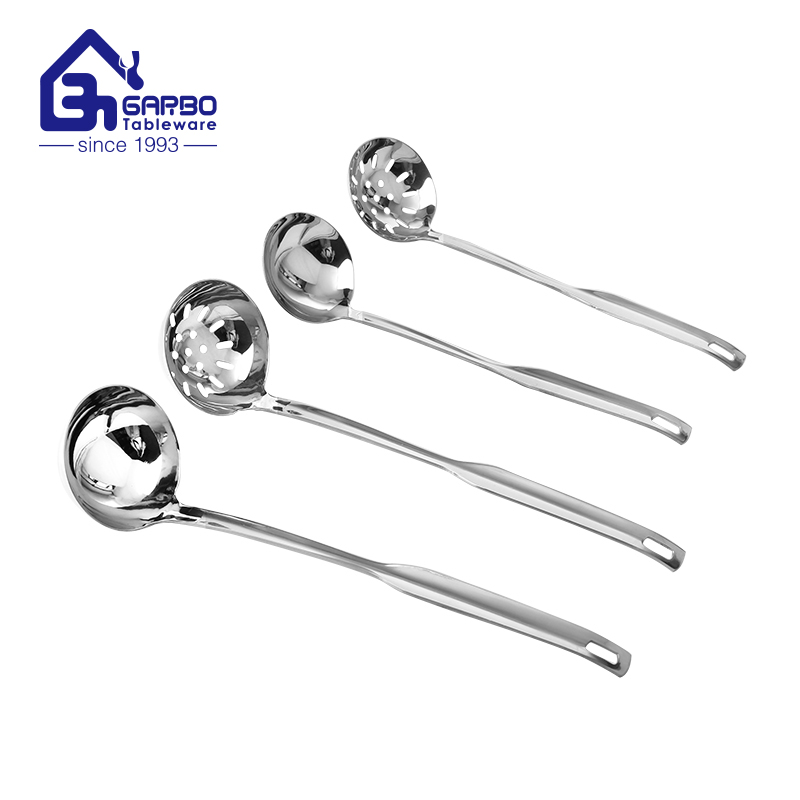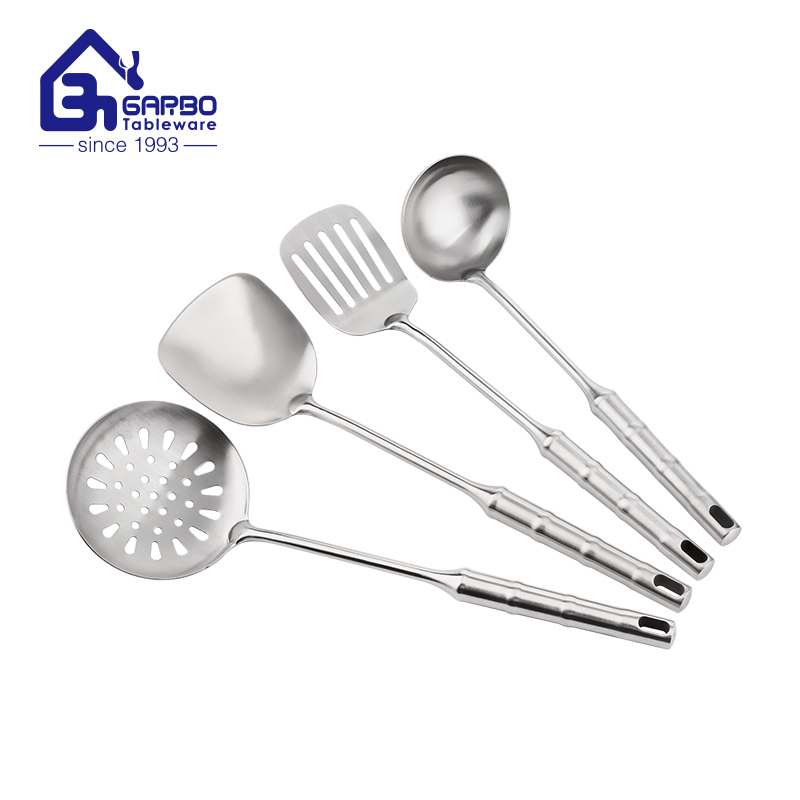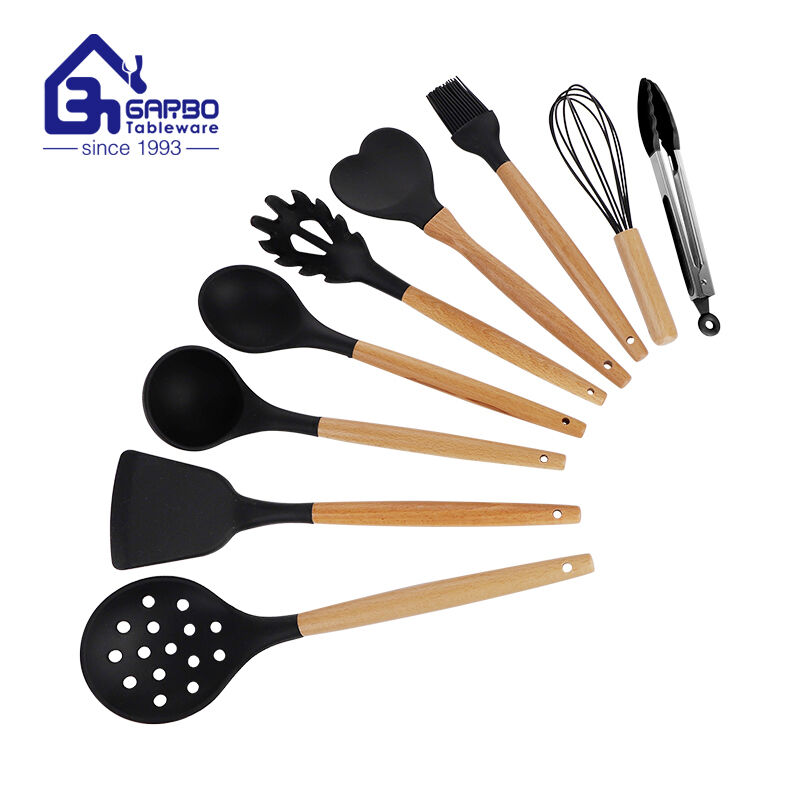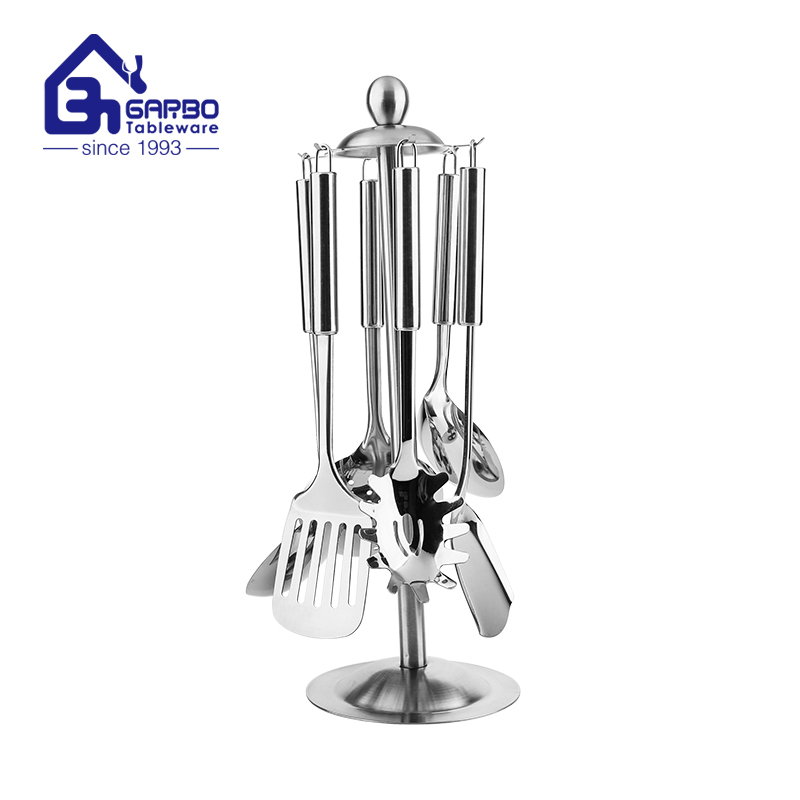Pulished on Jul. 07, 2023
Soup ladles are essential kitchen tools used for serving delicious soups and stews. However, you may find that even if you clean it immediately after use, it will accumulate some stubborn dirt that is difficult to remove over time. If the condition is too bad, it is recommended to replace it with a new one. Just follow the steps below and do it together! By following these methods, you can enjoy clean and sanitary soup ladles for your culinary adventures.
After using wooden spoons, spatulas, and other utensils, rinse them with warm water. It is not recommended to soak them in water as it may cause bacterial growth and cause cracks in cooking utensils in the future.

way1: Hot Soapy Water
Cleaning your soup ladles with hot soapy water is a simple yet effective method. Begin by filling a sink or basin with hot water and adding a few drops of dishwashing liquid. Submerge the soup ladle in the soapy water, ensuring it is fully covered. Use a sponge or a soft brush to scrub away any food residue or stains on the ladle's surface. Pay close attention to the underside of the ladle and the handle. Rinse the ladle thoroughly with clean water to remove any soap residue. Dry the ladle with a clean towel or allow it to air dry before storing it.
Way:2:Vinegar Soak
Vinegar is a natural cleaning agent that can effectively remove stains and odors from soup ladles. Fill a bowl or container with equal parts water and white vinegar. Place the soup ladle in the vinegar solution, ensuring it is fully submerged. Let the ladle soak for about 30 minutes or longer for stubborn stains. The acidity of vinegar helps break down residue and eliminates unpleasant smells. After soaking, remove the ladle and scrub any remaining stains gently with a sponge or soft brush. Rinse the ladle thoroughly with water to remove any vinegar residue. Dry the ladle completely before storage.
Way3: Baking Soda Paste
Baking soda is a versatile and natural cleaner that can effectively remove stubborn stains and residue from soup ladles. Create a paste by mixing baking soda with a small amount of water. Apply the paste to the stained areas of the ladle. Gently scrub the stains with a sponge or a soft brush, focusing on the trouble spots. Baking soda's gentle abrasiveness helps lift stains without scratching the ladle's surface. Rinse the ladle thoroughly with water to remove any baking soda residue. Dry the ladle completely before storing it. The baking soda paste method is suitable for both stainless steel and non-stick soup ladles, and it can effectively tackle tough stains, such as burned-on food.

Way4: Dishwasher
If your soup ladles are dishwasher-safe, using a dishwasher can be a convenient and efficient way to clean them.
The first way is to use a dishwasher to clean the dishes. This is a very convenient way, just put the tableware into the dishwasher, add detergent and water, and then press the button. The dishwasher can clean tableware under high temperature and pressure, effectively removing stains and killing bacteria. In addition, the dishwasher can quickly clean a large amount of tableware, which is particularly important in busy kitchens.

However, using a dishwasher to clean utensils also has some drawbacks. Firstly, it requires more water and energy consumption. Although modern dishwashers have become increasingly energy-efficient, they still require a certain amount of energy and water resources. In addition, using a dishwasher to clean utensils also requires more time. Some tableware needs to be cleaned for a long time in the dishwasher, which may take longer than manual cleaning.

Regularly cleaning your soup ladles is essential for maintaining hygiene and ensuring their longevity. How to maintain it? If the surface of spoons and other utensils becomes rough, you can use sandpaper to slightly grind them, and then apply a layer of oil to these utensils. Just use kitchen paper towels or clean towels to apply mineral oil or vegetable oil to the surface of wooden utensils, and then place them for 20 minutes, and then use clean kitchen paper towels or towels to wipe these utensils clean.